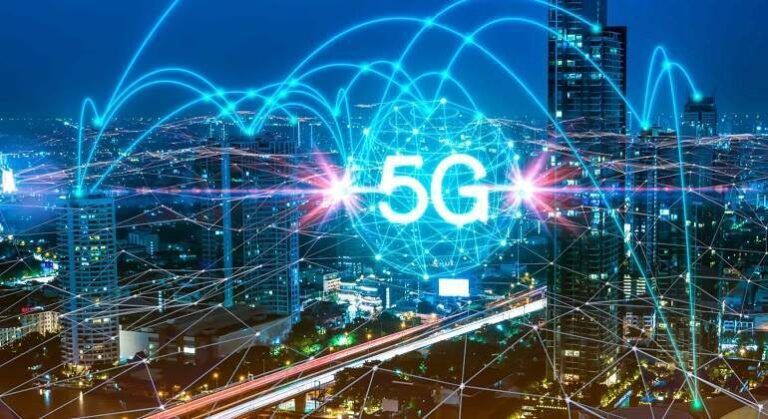
THE CHALLENGES OF TELECOMS, THE DEPLOYMENT OF 5G IN SPAIN AND THE REALVERSE, AT THE THIRD DAY OF THE 5G FORUM IN SEVILLE
The third day of the 5G Forum 2022 was attended by Antonio Fernández-Paniagua, Deputy Director General for Planning and Management of the Radioelectric Spectrum of the Ministry of Economic Affairs and Digital Transformation, and with large multinationals from Asia, the United States and Europe.
The third day of the 5G Forum 2022 has made it possible to show all the muscle of the large telephone companies worldwide: Telefónica, Orange and Vodafone. Also, Antonio Fernández-Paniagua, Deputy Director General for Planning and Management of the Radioelectric Spectrum of the Ministry of Economic Affairs and Digital Transformation, has carried out an in-depth analysis of the 5G map of Spain for 2022. And of course, this conference has once again featured top-tier multinationals from all over the world such as TOTEM and Ateme (France), Nokia (Finland), Adavantech (Taiwan), Cisco and Keysight Technologies (both from the United States) and Cellnex, Televes and Hispasat (Spain).
The 5G Map of Spain
This third day of the 5G Forum was inaugurated by the presentation by Antonio Fernandez-Paniagua, Deputy Director General for Planning and Management of the Radioelectric Spectrum of the Ministry of Economic Affairs and Digital Transformation, who made an in-depth X-ray of the 5G situation in Spain.
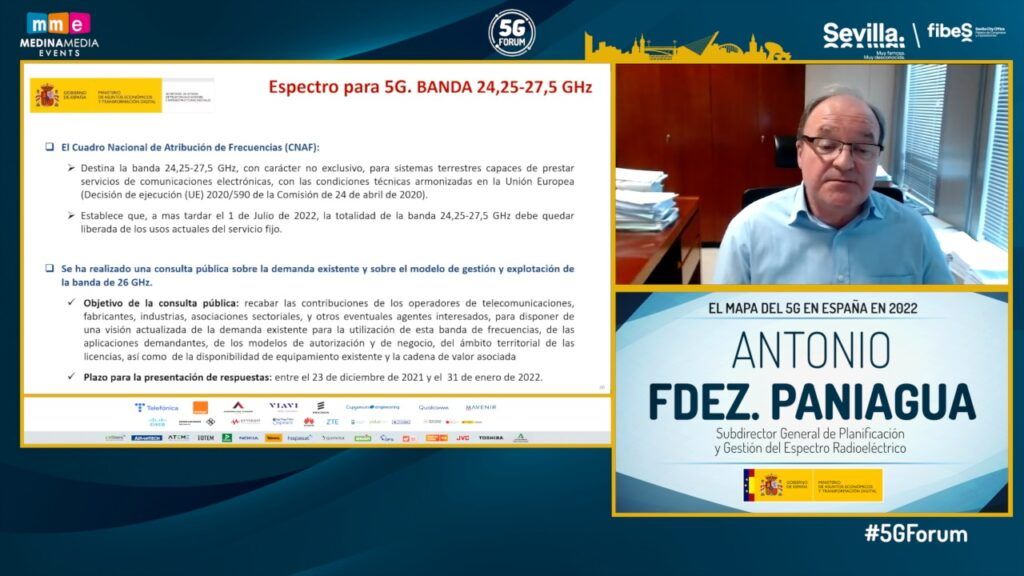
Paniagua has assured that the objective of the previous 5G 2018-2020 National Plan was to position Spain as one of the most advanced countries in the development of this new technological paradigm “in order to be able to make the most of the opportunities offered by this new technology.” ‘.
In reference to the 5G pilot projects of the 2018-2020 5G National Plan, Paniagua has confirmed “that a total of 10 pilot projects have been approved that encompass more than 120 use cases and the fundamental objective has been to experiment with 5G network deployments, experiment with the management technique that 5G technology allows and develop use cases that allow us to prove the improvement that 5G brings”. That is, very high-speed mobile broadband, ultra-reliable, low-latency communications, and massive communications.”
In July 2020, the Digital Spain Agenda 2025 was published, which contains a set of measures, reforms and investments that are articulated in 10 strategic axes already aligned with the new digital policies set by the European Commission for the new period. Given this, Paniagua has assured that “the 700MHz band is the only one that has generic 5G coverage obligations and additional specific coverage obligations. The holders of public concessions must comply with the requirements and obligations that in terms of security and cybersecurity of fifth-generation mobile communication networks and services are established at all times by the European institutions or Spanish regulations.
The big telephone companies show their potential
After Paniagua, it is the turn of Orange, Telefónica and Vodafone, who have shown all their muscle in reference to 5G technology. Angélica Sánchez, Marketing Director of Orange, has presented the situation and deployment of the 5G carried out by Orange in the city of Seville. This ambitious project has included the sale of 5G terminals at a reduced price to evaluate the customer experience. A highly positive experience that has also made it possible to decongest part of the 4G network at a time when it could be in high demand by Orange customers in Seville.
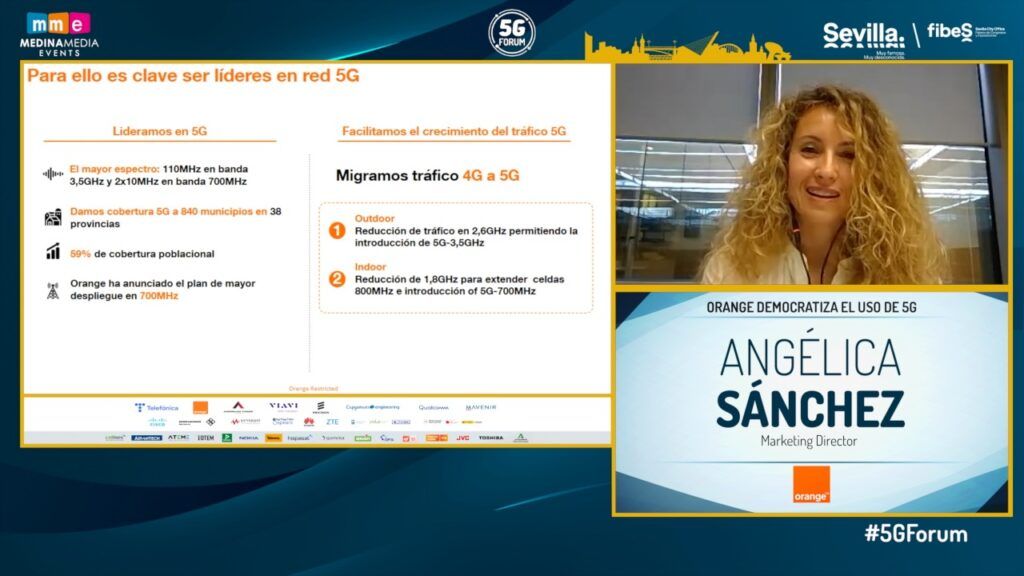
Sánchez has declared that Orange has a very firm commitment to investment in networks, both fiber and mobile and, especially now, in the 5g mobile network. “We invest more than 20% of our income each year in infrastructure and network deployments. This means that we have a very high coverage. We are the number one mobile network in 4G coverage, since our 4G network has reached a coverage of 98.4%”.
Given these results with 4G coverage, Sánchez affirms that they intend to have the same success with 5G: “We intend that 5G will also provide 100% coverage nationwide, currently that deployment reaches 58.6% and we are in more of 840 municipalities and we intend to reach 1500 municipalities in 2022”. Sánchez acknowledges that Orange has more than eleven and a half million customers and therefore it is intended that “data traffic will have multiplied by six between 2019 and 2025”.
Finally, in relation to 5G technology, Sánchez commented that Orange has more than 30 use cases that are related: “both with facial recognition surveillance, such as remote support, tourism issues, education, smart-campus , experiences in the field of logistics and fleet management, precision agriculture and also the production of television content”.
After Orange, the time has come for Telefónica with Juan Cambeiro, Head of 5G Innovation, who has outlined how 5G technology will evolve in the coming years and will even change the habits of Spanish society.
Cambeiro assures that Spain is the only country that has carried out an exercise in experimentation and 5G technology within the productive fabrics, of the client, of companies and of public administrations: “This is something to be proud of and speaks a lot about the concern, of the activity of the Spanish business fabric and of the public administrations that have made it possible for us to have more powers than anyone else in the European Union regarding 5G technology”
Telefónica is the first telecommunications operator to have a recognized certification authority for 5G vehicular purposes. For Cambeiro “this is a very important step to issue certificates that guarantee the authenticity of communications, their integrity.”
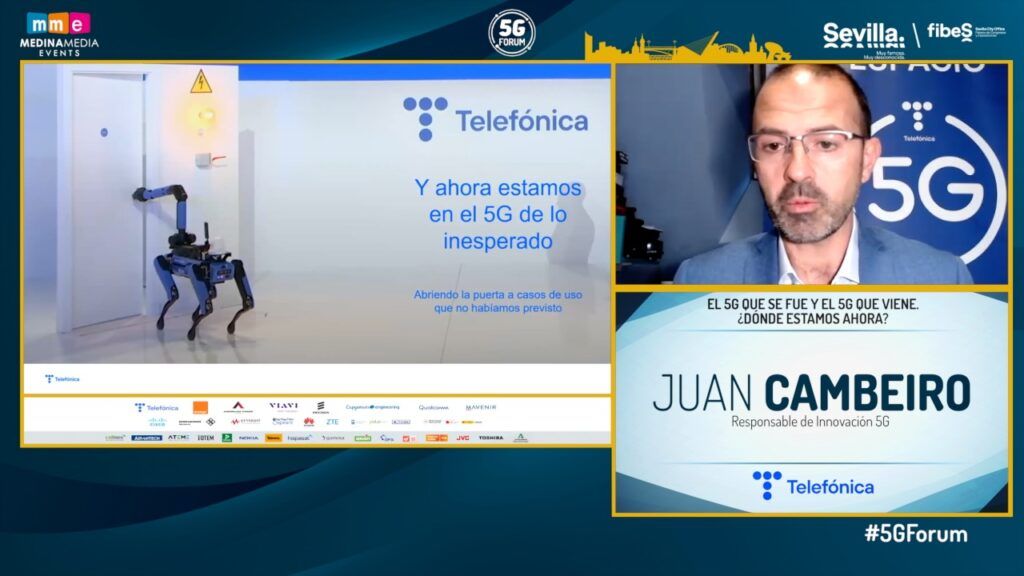
Spain is the country with the most 5G pilot projects and is the third country in the world with the highest fiber deployment. This for Cambeiro is something very commendable because “we have more fiber than the next 4 countries in Europe together and this is crucial for 5G, because the 5G antennas that have to carry all that traffic do so through fiber optics.”
After Telefónica, it is Vodafone’s turn. Montse Beamonte, Business Engagement Manager of this company, has recounted the new functionalities that 5G brings and how they have been applied in the different use cases that Vodafone has carried out in these almost 3 years that it has had its commercial network for all customers.
For Beamonte, the improvements that 5G technology brings are multiple: “First of all, there is the download speed, the improvement in latency or what comes to be the improvement in network response, which allows us to enable the use cases in real time. In addition, we have a new concept, Multi-Access Edge Computing, which thanks to being able to bring all these applications closer to the user, we manage to guarantee these downloads and bring the user closer to the totally appropriate responses. And finally, there is the capacity, since we multiply by 100 the number of users that we can have without affecting the quality. All this means that we have a much more efficient and sustainable technology”
Since 2019, Vodafone has been betting on 5G and already has a commercial network for its customers and use cases and events are being carried out with this technology. For this reason, for Beamonte “this technology is designed and developed to meet the demand we have both at the individual level and at the business level. In the field of clients at a personal level, in addition to ultra-fast downloads, we also have coverage in the field of gaming where we know that latency is essential”.
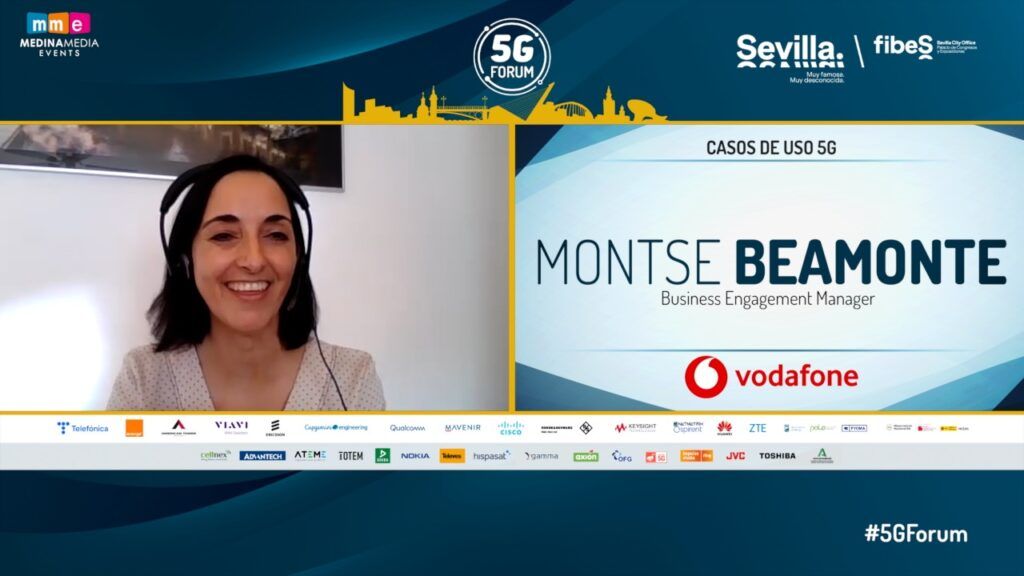
Beamonte also explained that Vodafone is putting a lot of focus on the area of virtual reality and augmented reality applications for individuals: “Our marketing department has created the 5G Lab space, where they have a metaverse to integrate content from third parties and that our users can live diverse experiences such as a concert or a meeting with friends”.
5G present in all sectors of society
After the big telephone companies, Cellnex’s turn has come. From the hand of its Senior Product Manager, Raül González, who has emphasized connected mobility with the so-called Cellnex Mobility Lab.
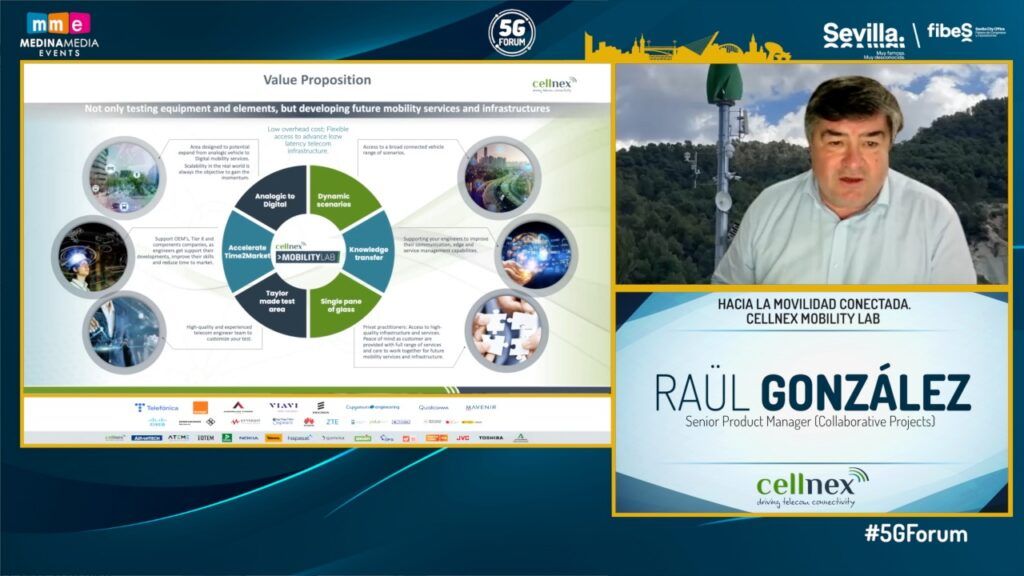
González has declared that they have been working on two fundamental areas in relation to connected mobility: Vehicle connectivity and railway line connectivity: “More than 85% of high-speed roads do not have access to energy at the connectivity at some points is quite limited in some areas “. We are working on modernizing that rail or road infrastructure so that it supports those needs that mobility in the 21st century will have,” says González. That is the foundation of Cellnex Mobility Lab”.
Subsequently, Andrés Posada, Director of Marketing and Sales at TOTEM, spoke to us about the challenges facing the extension of 5G. The responsible digitization of society goes through the definitive implementation of 5G in the productive fabric. The TowerCos play an essential role in accelerating the process and must propose proposals that help in this direction, facing a permanent transformation in their solutions, the challenge of energy and the reduction of visual impact, while ensuring the best quality of the service. With this idea, from TOTEM “we build networks in an agile, efficient way and always thinking about how to satisfy the demand of the operators and yes, using new technologies to adapt the entire infrastructure to the rhythm of what is going to mark the new digitalization “, assures Posada.
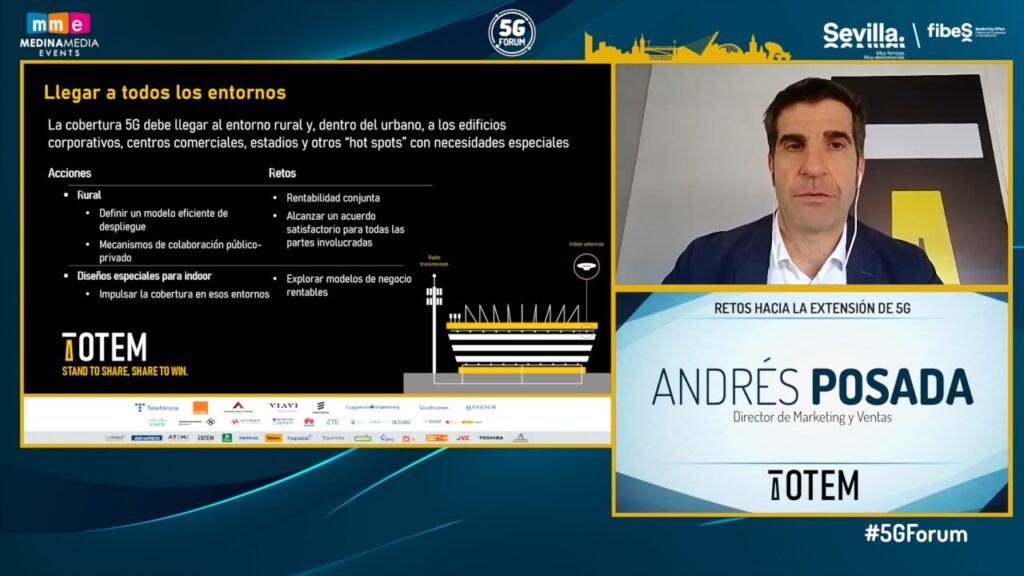
Next, José Luis Fernández-Carnero, General Director of Strategy at Televes, spoke about television broadcasting and other services in 5G technology.
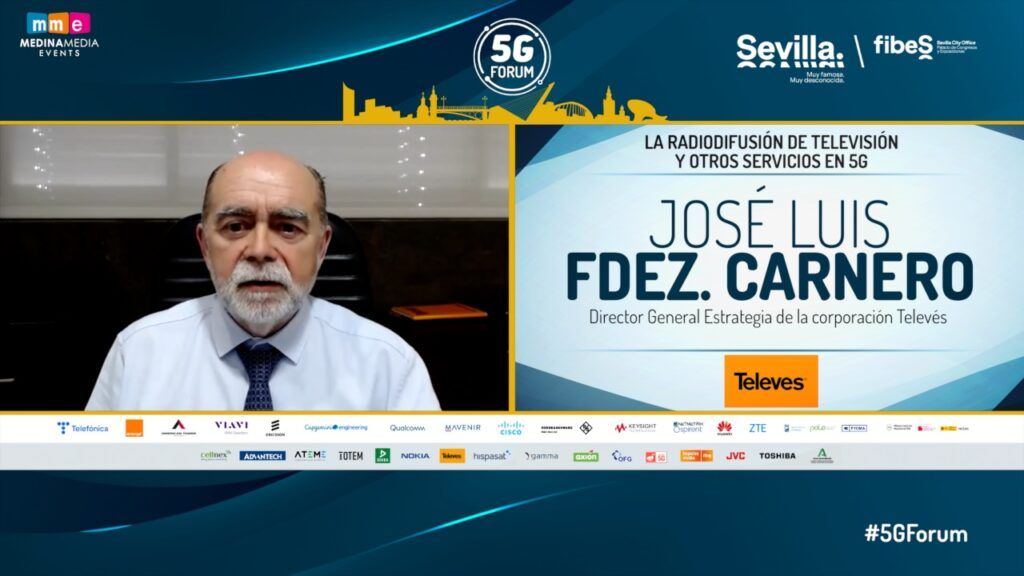
For Fernández-Carnero, there is something fundamental within the world of broadcasting: “The hybrid use of terrestrial television and 5G broadcast must be promoted”, because “5G broadcast integrates the two worlds: mobile communications with ROM broadcasting, when if version 17 is approved, it could be transmitted on UHF channels”
Subsequently, José Luis Serrano, Manager of Innovation and Product Strategy at Hispasat, presented the Smart5GSAT. The evolution of the standard is allowing the integration of the satellite in 5G, allowing the development of ultra-flexible deployments in rural and remote environments, leveraging the ability of the satellite to reach where others do not. From Hispasat, they are promoting these deployments by carrying out proofs of concept and pilots that allow testing the technology, developing new use cases on 5G and demonstrating the virtue that the satellite can contribute to both the deployment of commercial and private networks.
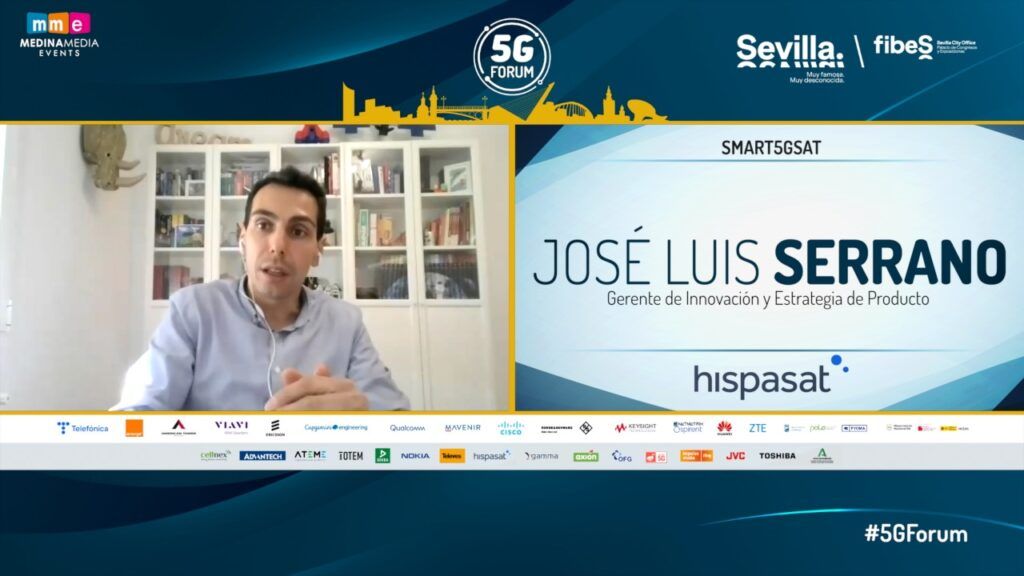
Serrano assures that they are carrying out a strategy based on two pillars: “On the one hand, it is to demonstrate the value of 5G as a satellite, as a secure connection and easily deployable in a remote environment. And on the other hand, apply all the advantages and functions of 5G, since this allows functions to be separated and distributed throughout the geography”.
The Realverse and autonomous cars
Nokia, with its Nokia – XR Lab researcher, Diego González, has presented the so-called Realverso. The Metaverse has become the buzzword ever since Facebook announced its all-out bet on virtual reality technologies. From the Extended Reality Lab team at Nokia Spain, they have been working for years on what they have coined the Realverse: instead of allowing the user to isolate themselves in a virtual environment, they want to transfer and mix different remote realities, unlocking a new mode of human communication. To do this, a set of complex artificial intelligence algorithms are needed that demand a processing capacity greater than that currently available in display devices. 5G networks allow this processing (offloading) to be moved to an edge with high computing capacity, ensuring a wireless connection with high bitrate and very low latency. In this talk, González has presented the offloading solution for artificial intelligence algorithms for advanced immersive applications that allow us to approach this new model of human communication.
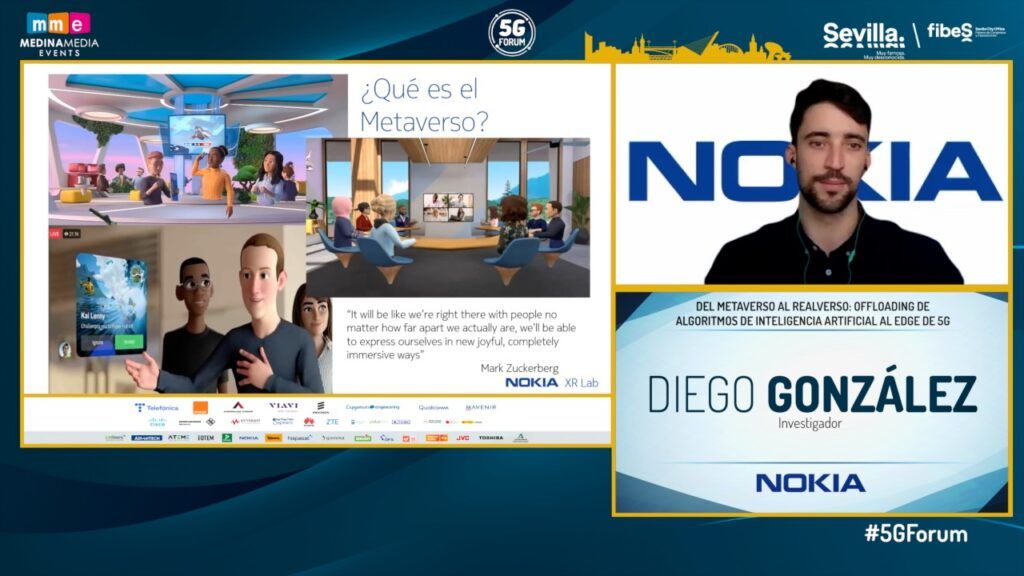
González assures that Nokia’s objective is to eliminate avatars, “That the user sees himself within the virtual scene and better still, we want to allow the user not only to share certain elements of his own body, but his entire local reality. Our proposal is what we have called the Realverso. Being able to share our reality remotely and interact with other people.”
Subsequently, Mickaël Raulet, CTO of Ateme, presented 5G media transmission: high QoE, personalization at the edge. That is, the recent advances in 5G technology, with a paradigm shift towards convergence in any network, allowing personalization and high quality of service and experience, reaching any viewer, anywhere and at any time.
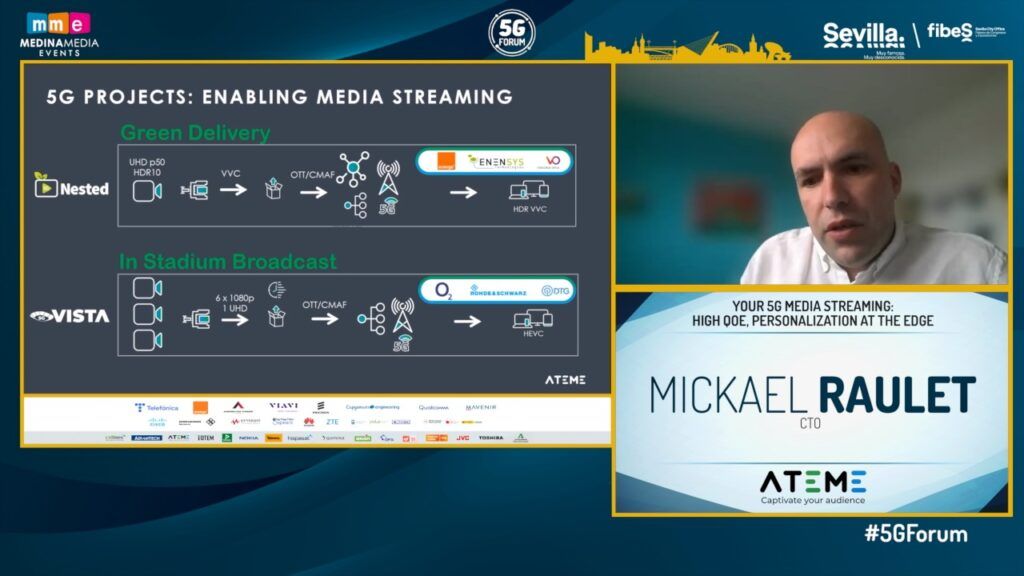
For Raulet “something that sounds like 5G is the ability we have to do Edge Computing. Maybe at some point, thanks to 5G, we will have an autonomous car and we will be able to consume video inside our car without having to drive anymore. And that’s real.” Regarding autonomous cars, Raulet affirms that “it can happen in the future and Tesla is moving very fast”.
Later, David Ramos, EIoT Country Manager Iberia at Advantech, spoke about artificial intelligence and edge processing on 5G.
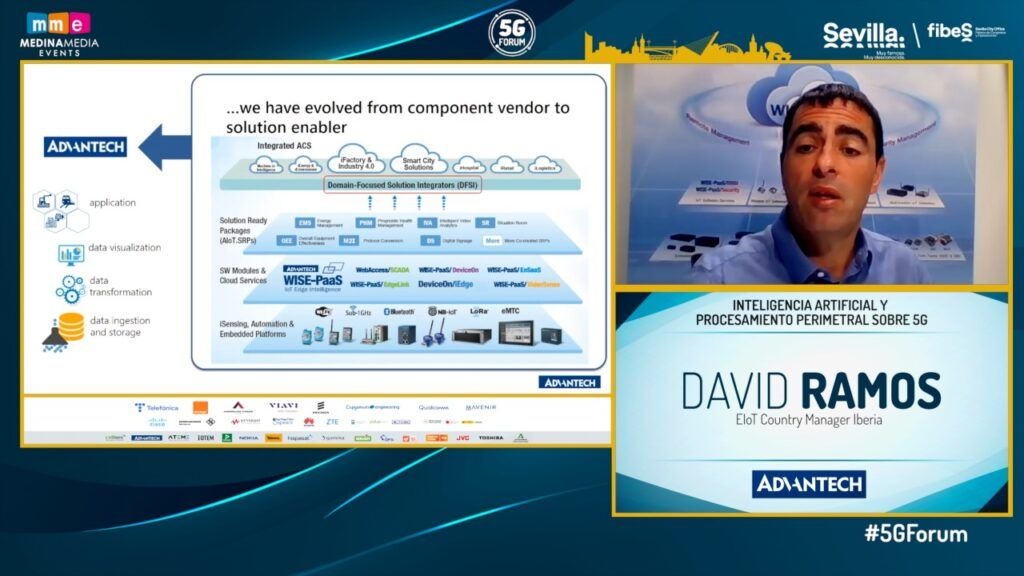
This company is developing its IoT strategy focused on intelligence hardware and software solutions at the perimeter. The implementation of solutions based on 5G communications and distributed intelligence at the edge make it possible to incorporate more complex solutions, such as artificial intelligence, facilitating learning processes and opening the door to new applications and processing architectures. “Our technological capacity is complemented by an international presence capable of providing local services, technical support and personalized solutions, in addition to logistics and repair services,” says Ramos.
American companies on the third day of the 5G Forum
The American companies Cisco and Keysight Technologies have closed this third day of the 5G Forum. On behalf of Cisco, Virginia Teixeira, Principal Systems Architect, explained that 5G can enable the digital society with IoT and P5G solutions. From this more powerful connectivity, it is possible to realize technologically advanced IoT services that demand diverse and stringent performance parameters. And for demanding business environments, P5G is a key architecture to ensure that superior connectivity.
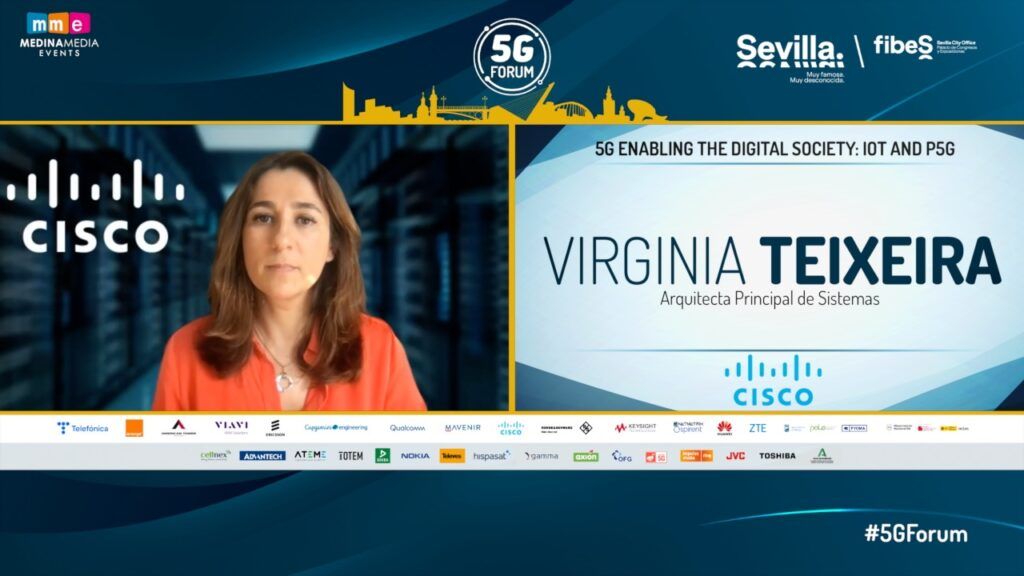
Given these solutions presented by Cisco, Teixeira assures that his company has developed a cloud solution that can be used by operators and by the public and private 4g and 5g networks. “Cisco is going to take care of all the aspects of the solution, it is going to have the qualified human resources, it is going to do the sizing, planning and production of the capacity, it is going to do any type of activity with the level of service that the operator demands and that the final business customer demands. And all this can be done with an optimized cost because the economy of scale will be used”.
On behalf of Keysight Technologies, Rafael García, Product Manager, has summarized the details of the end-to-end 5G massive MIMO technology. It has also shown how to measure massive MIMO beamforming and data throughput simultaneously with Keysight’s latest wireless analytics and channel emulation solutions.
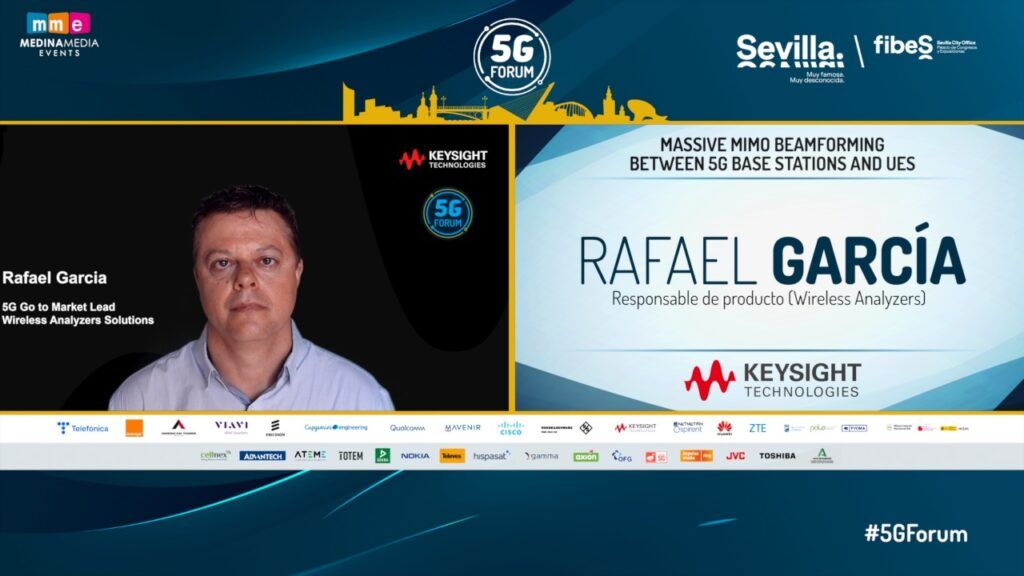
The 5G Forum will continue until May 13 virtually. Those registered for the 5G Forum 2022 will be able to follow the streaming sessions and network through video meetings with speakers and participants, through the virtual platform created by Medina Media Events. The rest of the days of the week – May 12 and 13 – will continue in virtual format and will be broadcast every day on said platform. As soon as they are broadcast for the first time, they are made available to virtual attendees in Video on Demand (SVOD) on the Platform of Medina Media Events, the organizer of the event.
The 5G Forum is a privileged opportunity to publicize the successes of each initiative, each company, each university, each project and each city, in an event of international reference and with a first-class showcase. It is promoted by Sevilla City Office and Fibes. It also has the support of Telefónica, Orange, American Tower, Viavi Solutions, Ericsson, Capgemini Engineering, Qualcomm, Mavenir, Rohde & Schwarz, Keysight Technologies, Netmetrix-Spirent, Cisco, Huawei, ZTE, Malaga City Council, Digital Content Center , Fycma, National 5G Observatory, Cellnex, Advantech, Ateme, TOTEM, Dekra, Televes, Hispasat, Nokia, JVC, Toshiba, Axión, Impulsa Vision RTVE, OFG and Evolved 5G.